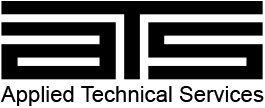- Home
- Services/IndustriesServicesindustries
- About Us
- LocationsStatesAccordion ContentAccordion ContentAccordion ContentAccordion Content
- Job Openings
- Quick Links
- ATS Family

Corrosion Under Insulation: CUI Testing and Inspections
ATS experts conduct corrosion under insulation (CUI) testing and inspections. Corrosion under insulation is a type of metal corrosion that occurs due to moisture and oxygen exposure. Breaks in jacketing or insulation can allow water to seep into an insulation system via rain, condensation, or spillage. If the insulation absorbs the water, or the water collects underneath it and cannot escape the system, CUI can occur. CUI affects carbon steel as general or localized corrosion; even stainless steel can experience localized corrosion or stress corrosion cracking. Left unaddressed, CUI can cause leaks, equipment failure, and unexpected downtime. ATS performs CUI testing and inspections to help clients minimize these potential issues.
Corrosion under insulation can be a difficult problem to detect because the insulation hides visual evidence of any issue. By the time this flaw becomes apparent, it can be expensive to fix. CUI affects many industries, but chemical, maritime, and petrochemical companies face this problem most often. Piping and tank systems should have an inspection program in place to detect this common issue before it causes failure. ATS offers several CUI testing methods for early detection.
Testing and Inspection Methods
Insulation removal is the most labor-intensive, expensive CUI detection method. Nondestructive testing (NDT) methods are more effective for monitoring pipe and tank conditions. Our NDT professionals can conduct preliminary visual testing and inspections to determine which inspection method is ideal for your equipment.
Radiometric Profiler
Our radiometric profiler is a portable system that uses a low-level radiographic source. The handheld system attaches to a c-arm and estimates wall thickness using changes in density. This method produces quick and cost-effective results without setting off radiation meters attached to tanks or requiring radiation barricades.
Real-Time Radiography
Real-time radiography (RTR) produces imaging of a pipe’s outer diameter profile through the insulation. Changes in the profile may indicate areas of corrosion. This technique can pinpoint areas of concern for further analysis. RTR is a safer and faster CUI testing method than traditional radiography methods.
Pulsed eddy current uses electromagnetic waves to measure the wall thickness of electrical conductors. This method penetrates the insulation to magnetize the structure and measures the decay of eddy currents generated by the electromagnetic waves to get an accurate thickness reading. Pulsed eddy current is generally a screening method for CUI rather than positive identification.
Ultrasonic thickness measurement (UT) uses ultrasonic waves to measure a solid element’s thickness. This test can measure wall thickness through coatings and linings. One relatively expensive downside is that performing UT requires the technician to cut plugs out of the insulation.
ATS: Experts in NDT
ATS has been a leader in testing and inspections for over 50 years. Our NDT experts are experienced and qualified to inspect equipment for CUI. Some of the corrosion under insulation standards we test include API 570, API 571, and API 583. We deliver fast, accurate, and clear reporting. Our experts can answer any questions regarding testing, results, or data.
If you need corrosion under insulation (CUI) testing and inspections, contact ATS today for a closer look.

Request Form
"*" indicates required fields
NDI Inspections
- Flow-Accelerated Corrosion Testing
- Hull Inspections
- Industrial Heat Treating
- Metal X-Ray Testing
- NDI Companies
- NDI Eddy Current Inspection
- NDI Laboratory
- NDI Liquid Penetrant Testing
- NDI Magnetic Particle Testing
- NDI Specialists
- NDI Test
- NDI Radiography Testing
- NDI Ultrasonic Testing
- NDT Welding Inspection
- Nondestructive Inspection
